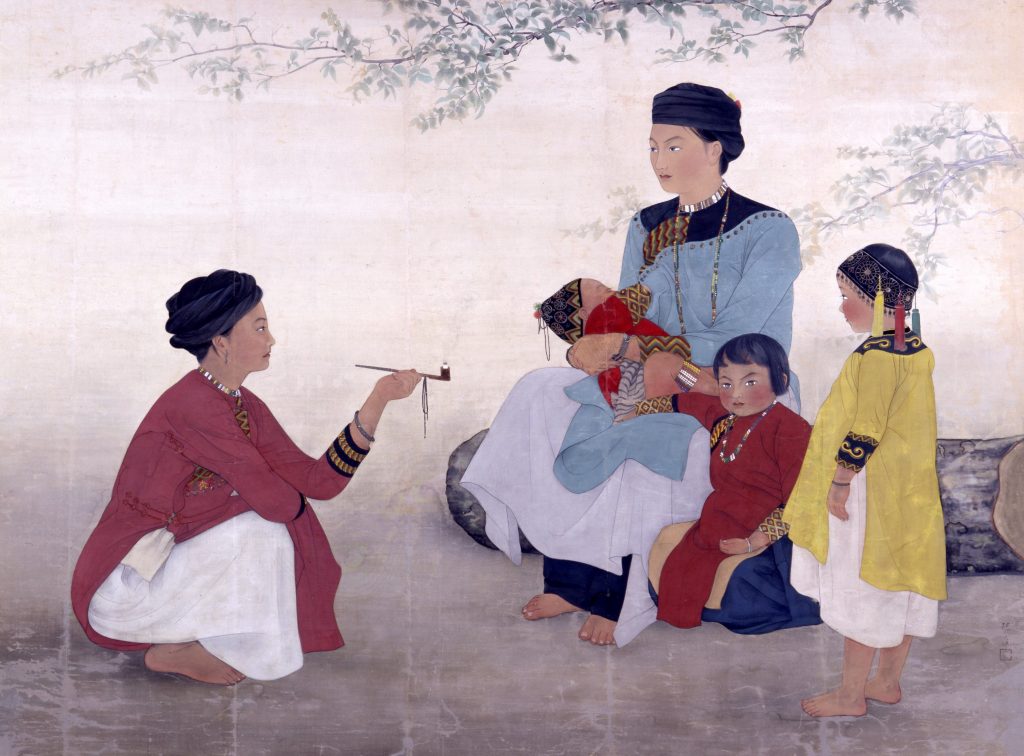
The Women of Shantimen Area
Chen Chin was born in Taiwan during Japanese colonial rule. A female artist who studied Japanese style painting in Tokyo Women's University of Art and was active in Imperial Art Exhibition (Teiten), New Ministry of Education Art Exhibition (Shin Bunten) and Taiwan Art Exhibition (Teiten) before the war, Chen Chin was one of the representative artists in the history of Modern Taiwan. While she was a teacher of a girl's school in Pingdong in south Taiwan, she visited Shantimen, a nearby village of the aboriginal Paiwan, to do preliminary study for the painting. The finished work eventually made it to the 1936 Ministry of Education Art Exhibition. For contemporary Japanese the image of the aborigines was the symbol of Taiwan, and Shantimen was known by the Japanese as one of the modernized among aboriginal villages. The artist chose the subject by taking into consideration the Japanese perception of Taiwan and the publicity of the village. With refined brushwork and elegant coloring, the artist created an idealized female image. The artist once said that she intended to portray the beauty of her homeland. The regal manner of the women and the tense picturesque atmosphere created by the tight composition of the painting illustrate Chen Chin's approach to seeking the unique beauty of Taiwan. (RT)
Work description
| Title | The Women of Shantimen Area |
|---|---|
| Name of the Artist | Chen Chin |
| Year | 1936 |
| Medium | color on silk |
| Size | 147.7×199.9 cm |

